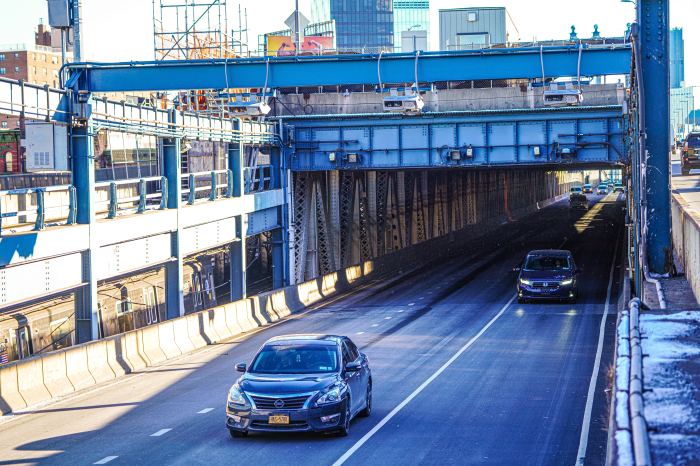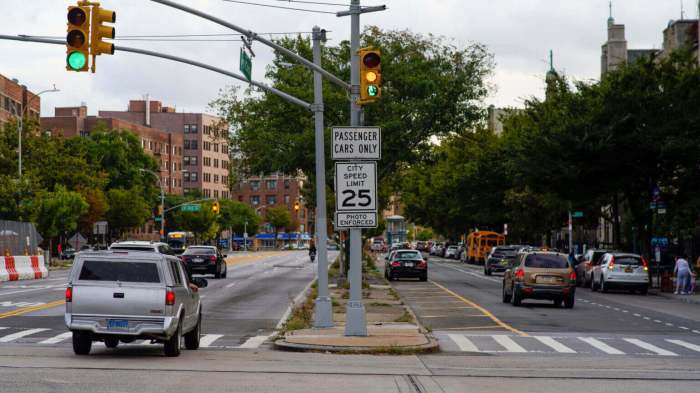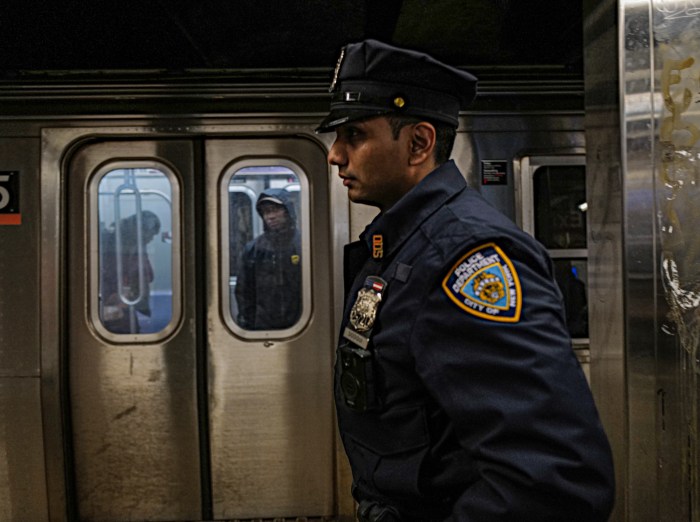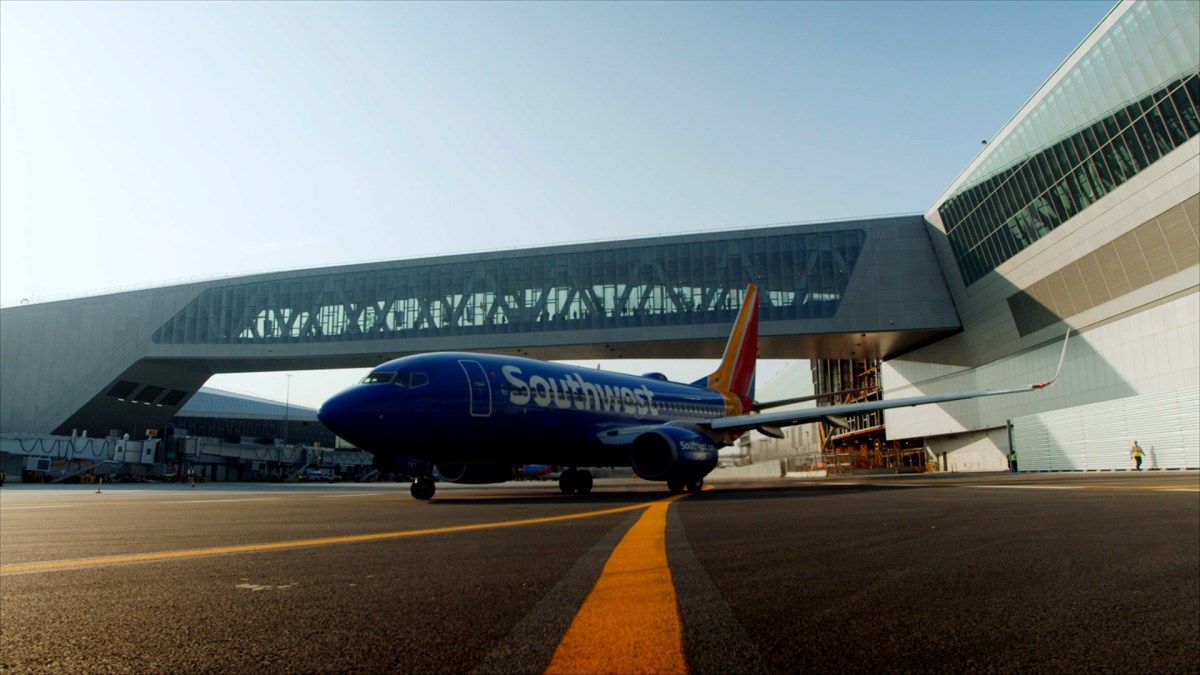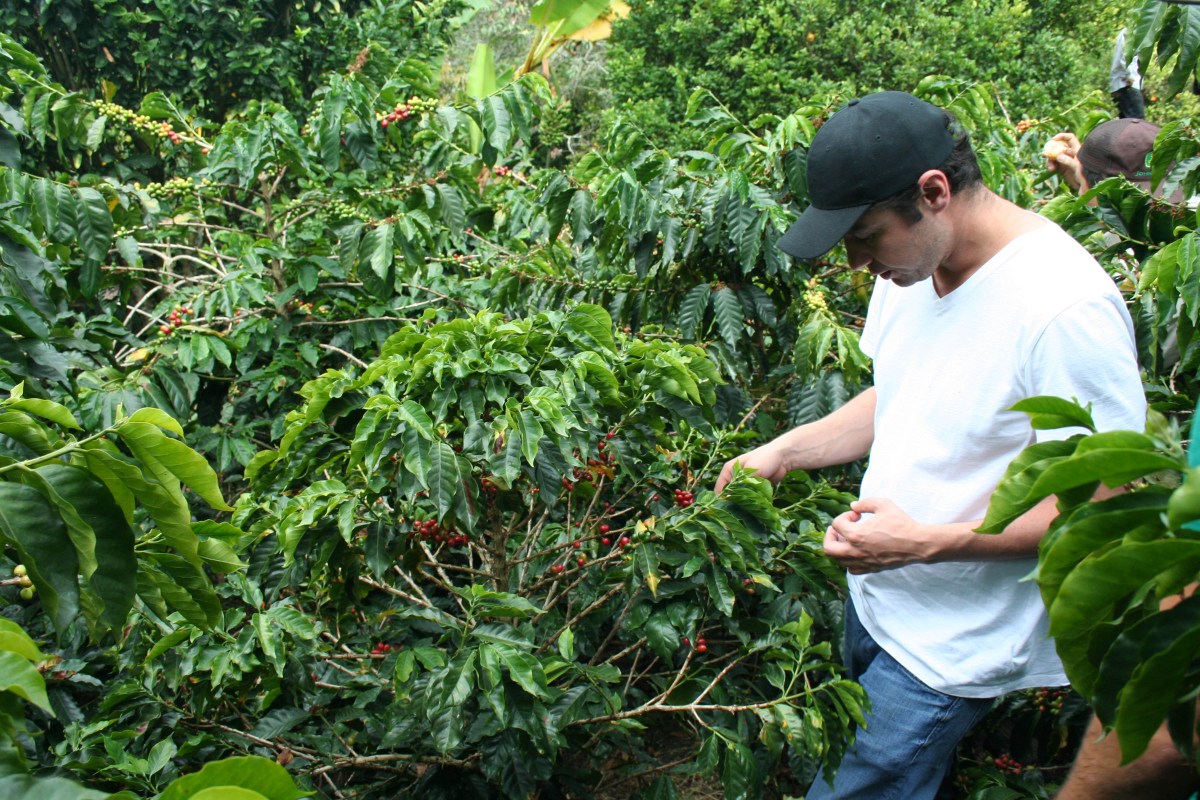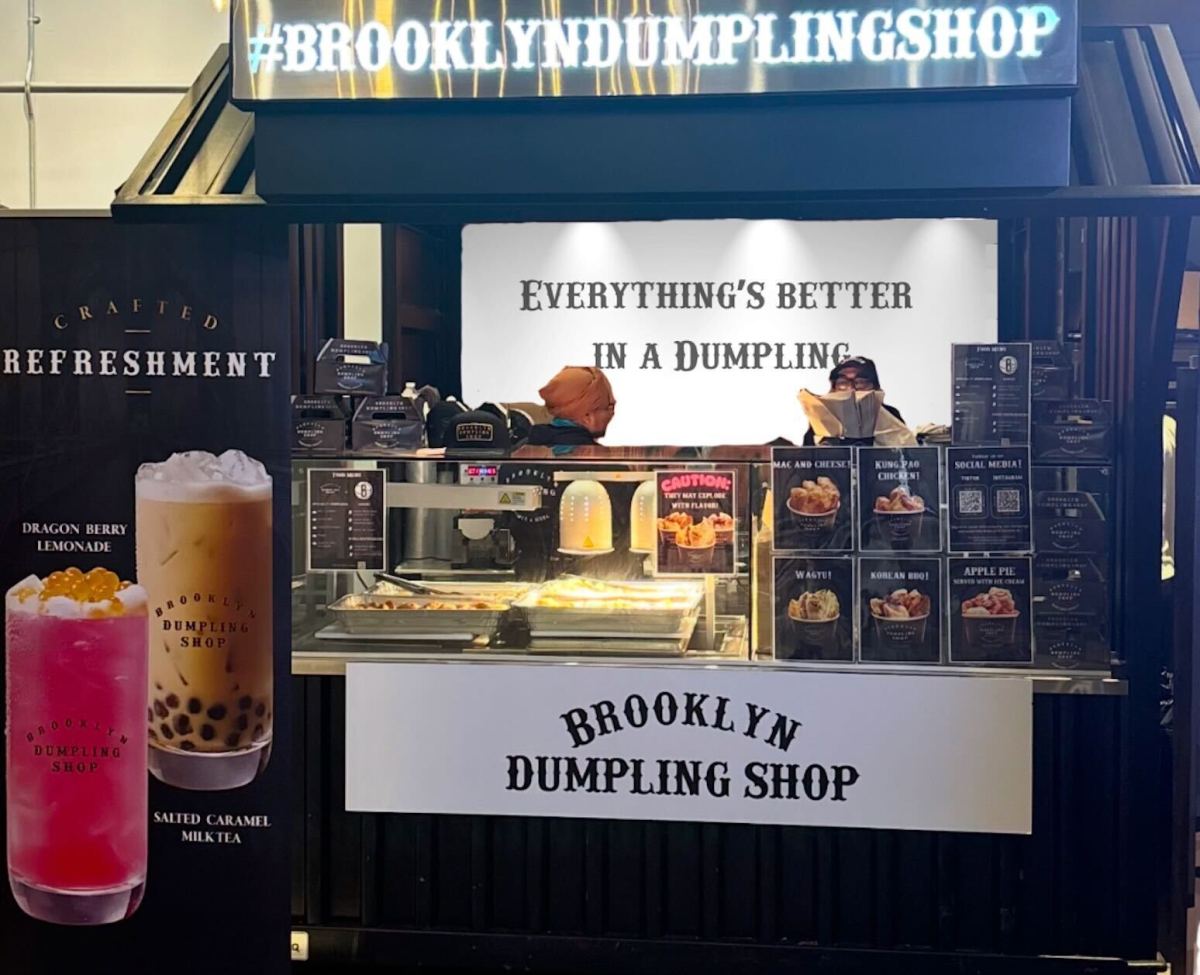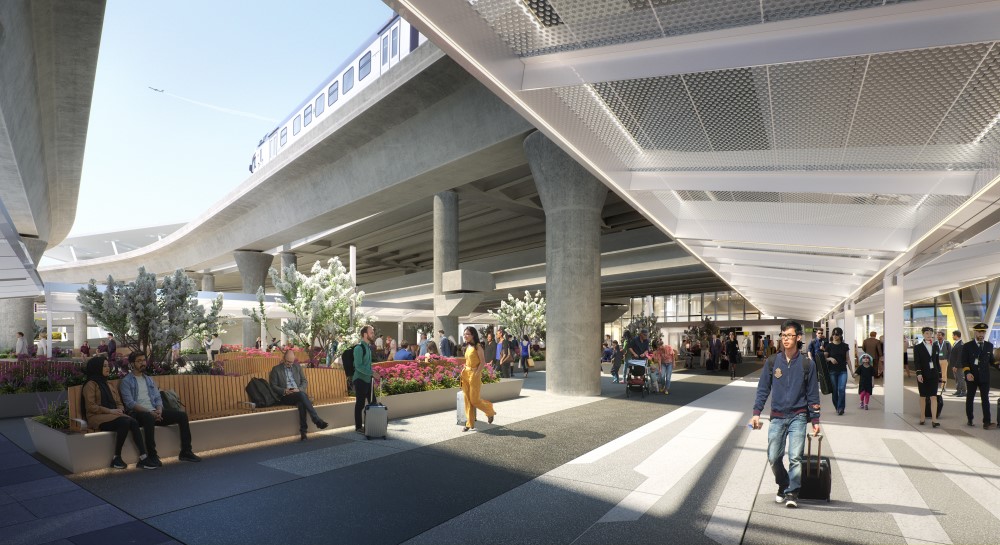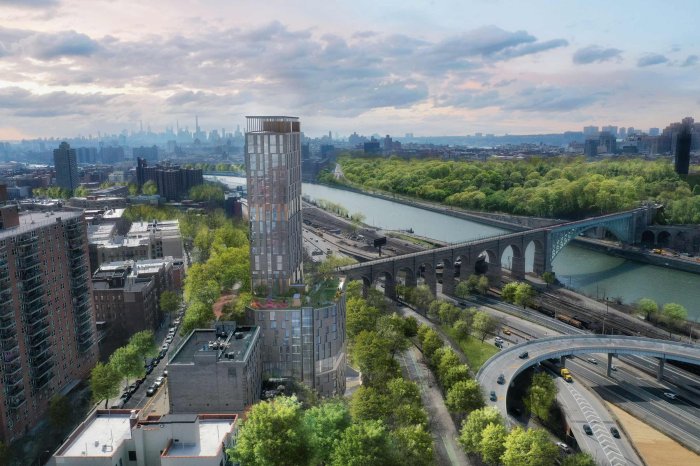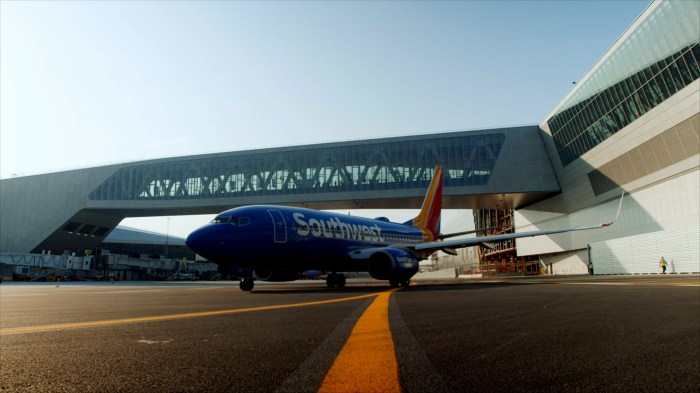
It’s the trophy the MTA never wants to receive: a golden snail on a pedestal to honor the slowest bus in the city.
Advocates from the NYPIRG Straphangers Campaign hosted its annual Pokey and Schleppie awards Tuesday, dishing trophies to the slowest and most unreliable buses in New York City. The golden snail commemorating the slowest route was awarded to the M42, which travels at an average pace of 3.2 mph across 42nd Street, the congested heart of midtown — or just about the average human walking speed.
A chicken in full sprint is faster, the nonprofit group notes. It’s the fifth time in 15 awards ceremonies that the M42 took home the dubious distinction.
“Riding a bus can feel like being in a funeral procession, when you are awaiting a slow caravan of crowded, crawling and bunched buses,” said Gene Russianoff, of the Straphangers Campaign, who wore a suit and bowtie for the awards ceremony held outside City Hall. “It’s maddening. Much more can be done to make them run faster.”
The Schleppie trophy for most unreliable service, the design of which Straphangers described as a “pair of lumbering elephants,” was awarded to the B12 route running between Prospect Lefferts Gardens and Brownsville in Brooklyn. The group measures unreliability by tracking the percentage of buses that arrive at stops bunched together — one right behind the other.
“Riders hate bus bunching because it means that their bus shows up unreliably,” said Jaqi Cohen, also of the Straphangers Campaign, who were a tuxedo for the awards announcement.
The awards returned from a two-year hiatus amid an increased focus from advocates — and the MTA itself — on improving bus service, which has experienced a significant drop in ridership since 2014, as routes have slowed in mounting congestion and e-hail services like Uber and Lyft have risen in popularity.
Straphangers and a coalition of other advocacy groups have begun pushing more aggressively for measures like congestion pricing for Manhattan’s core, which they believe could reduce traffic and raise funds for transit improvements.
The MTA and the city could also speed up buses by giving them more priority on city streets, with upgrades like Traffic Signal Priority, which helps buses move through intersections more quickly, and by better enforcing bus lanes, Cohen said.
The M42 could be seen as a case study in failed bus policy. The route does feature “bus only” lanes during rush hour, but advocates say the lanes, like others in the city, are frequently blocked by other vehicles.
“There isn’t enough automated enforcement to keep buses moving quickly,” Cohen said. “Bus lanes are only as effective as they are clear. They need to be clear in order for buses to be able to move freely in them.”
The M42s certainly weren’t moving freely for riders Tuesday. Daniel Reed, 21, from Harlem, took the bus for the first time and nearly missed a job orientation.
“It was so slow. There were a whole lot of problems,” he said. “It nearly messed me up today.”
Sandra Ollivierre, 68, of Queens Village, takes the bus from the Bryant Park subway station to get to her job as a hotel attendant in midtown. It’s a two-block walk, but it’s tough for Ollivierre to handle at her age, she said.
“I’m always having a problem. I’m always waiting. It’s never on schedule,” she said. “I have to wait between 10 and 20 minutes.”
An MTA spokesman noted that improving bus service was a focus of the authority’s Transit president, Andy Byford.
“His comprehensive Bus Plan prioritizes completely redesigning the entire bus network in collaboration with NYCDOT and the NYPD, who are critical partners we need to unclog traffic and allow us to deliver the world-class service that New Yorkers deserve and that our fleet and personnel are capable of delivering,” the spokesman said in a statement.
There was one fan of the awfully slow M42: Tom Kane, 30, a tourist visiting the city, who said the route is sluggish enough to double as a sightseeing tour.
“I don’t want the bus to be quick,” he joked, “because we want it to go slow and see everything.”
Here are the slowest bus routes per borough, according to the Straphangers Campaign:
- B63, 4.7mph between Fort Hamilton and Brooklyn Bridge Park;
- Bx19, 4.6mph between New York Botanical Garden and Riverbank State Park;
- M42, 3.2mph between Circle Line Pier and East Side, via 42nd Street;
- Q20A, 6.4mph between Jamaica and College Point;
- S48, 7.3mph between St. George and Mariners Harbor.
And here are the most unreliable routes per borough, according to the Straphangers Campaign:
- B12 Local, 21.4 percent bunched between Brownsville and Prospect Lefferts Gardens;
- Bx21, 17.9 percent bunched between Westchester Square and Mott Haven;
- M4, 15.3 percent bunched between Washington Heights or Fort Tryon Park and midtown;
- Q43, 17.2 percent bunched between Floral Park and Jamaica;
- S78, 10.6 percent bunched between Bricktown Mall and St. George Ferry Terminal.
With Ivan Pereira



